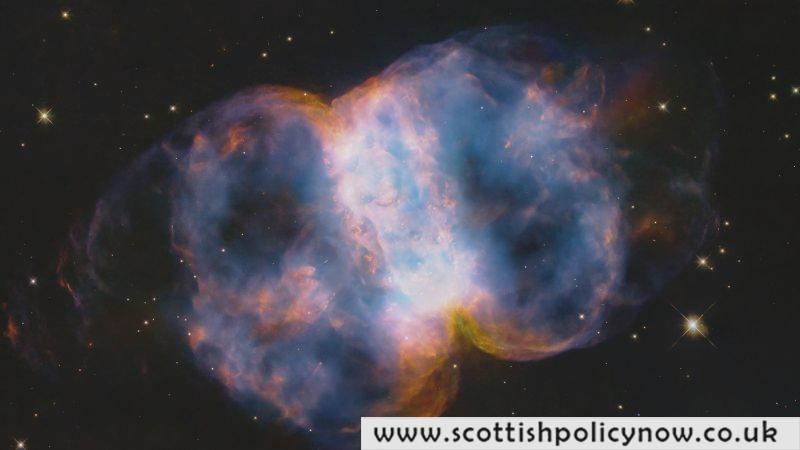The Hubble Space Telescope has captured a breathtaking image of glowing gas expelled from a dying star, which strikingly resembles a “cosmic dumbbell.” This mesmerizing sight may also hint at a cosmic cannibalism event, suggesting the star once consumed a companion before it met its end.
NASA released this image of the Little Dumbbell Nebula, also known as Messier 76 or M76, to mark the 34th anniversary of the telescope’s launch on April 24, 1990. The nebula is located about 3,400 light-years away in the constellation Perseus and is the result of an expanding shell of gases ejected by a dying red giant star. Despite its name, a planetary nebula has no connection to planets; it is so named because of its round appearance when first observed by French astronomer Charles Messier in 1764.
Pierre Méchain discovered the Little Dumbbell Nebula in 1780, and detailed studies began in 1891. Astronomers have been drawn to its unique shape for decades, often pointing their telescopes at its stunning structure.

If scientists confirm the cosmic cannibalism theory, it could provide evidence that the red giant star swallowed a companion star before it collapsed into its current state.
In the Hubble image, the Little Dumbbell Nebula displays a ring of gas and dust resembling a central bar, with two lobes extending from either side. The ring formed as the dying red giant star released gas and dust, possibly shaped by its now-absent companion star. If this companion star did indeed orbit the red giant, it might have been swallowed up, leaving behind only clues within the ring.
The red giant has since transformed into a white dwarf star, a dense remnant of a dead star. This white dwarf, seen as a bright white light at the center of the image, has a temperature of 250,000 degrees Fahrenheit (138,871 degrees Celsius), making it 24 times hotter than our sun’s surface.
The two lobes in the Hubble image represent the hot gas shooting out into space at a blistering 2 million miles per hour, driven by stellar winds emanating from the white dwarf. The ultraviolet radiation from the white dwarf illuminates the gas, producing distinct colors, with red indicating nitrogen and blue showing oxygen.
Astronomers predict that within 15,000 years, the nebula will dissipate as it continues to expand and grow dimmer.
The Little Dumbbell Nebula is just one of over 53,000 astronomical objects observed by Hubble during its 34-year history, with the telescope making 1.6 million observations to date. Its extensive database is invaluable to astronomers seeking to understand the cosmos, from supernovas to distant galaxies and exoplanets.
The Hubble and James Webb Space Telescopes work together to explore different wavelengths of light, allowing for a deeper understanding of the universe’s many mysteries.








